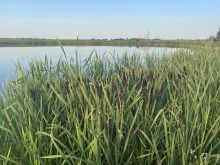Buckwheat caught the attention of Manitoba farmers scrambling to get their land seeded this spring.
The Manitoba Buckwheat Growers Association believes farmers planted about 50,000 acres to the crop this year, a jump of almost 15,000 acres from a year ago.
Michel Durand, president of the buckwheat growers association, said much of the increase is in western Manitoba, where wet weather hampered seeding efforts. Buckwheat, a crop suited for late seeding, was one of the few options left to farmers.
But Durand views the increased acreage with mixed emotions. Because buckwheat does not do well in wet soils, he worries it might not meet the expectations of farmers growing it for the first time.
Read Also

Europe holds promise for Canadian lentils
Pulse Canada is trying to help boost lentil consumption in Europe, which is already the fourth largest market.
Farmers getting their introduction to the crop may also struggle with weeds. There are no herbicides registered for use on buckwheat in Manitoba.
“I think some farmers will love it,” said Durand. “Some farmers will absolutely hate it.”
Yields often range between 25 to 30 bushels per acre. Durand expects the average yield in Manitoba to drop below that for 1999 because of crops grown in less than ideal conditions.
Some buckwheat also was planted in Saskatchewan and Alberta, but Manitoba accounts for most of the crop grown on the Prairies.
Weed control and frost are two of the greatest concerns for producers.
Efforts are under way to get some herbicides registered for weed control, Durand said. But because buckwheat remains a small crop, it’s not known whether those efforts will succeed.
Meanwhile, researchers are developing new varieties, including a self-pollinating plant that could withstand fall frosts.
This variety is in advanced trials and could be on the market in two to three years, said Clayton Campbell, president of Kade Research Ltd., a company that develops new buckwheat varieties.
One of the advantages of growing buckwheat is that few inputs are needed, said Campbell.
And prices shine compared to commodities such as wheat. Agricore this spring signed contracts guaranteeing $8 per bushel for Koban and $7.50 per bushel for Mancan.
Much of Manitoba’s buckwheat is exported. Japan is the largest buyer, importing 100,000 tonnes a year.
Japan grows some of its own buckwheat, but also imports from the United States and China.
“Quality is on our side when comparing ourselves to China,” said Durand. “But they have the quantity and cheaper prices as well.”
Brian Sweeney, an Agricore field representative, said it’s too soon to tell what effect Manitoba’s increased buckwheat acreage might have on prices paid by Japan.














